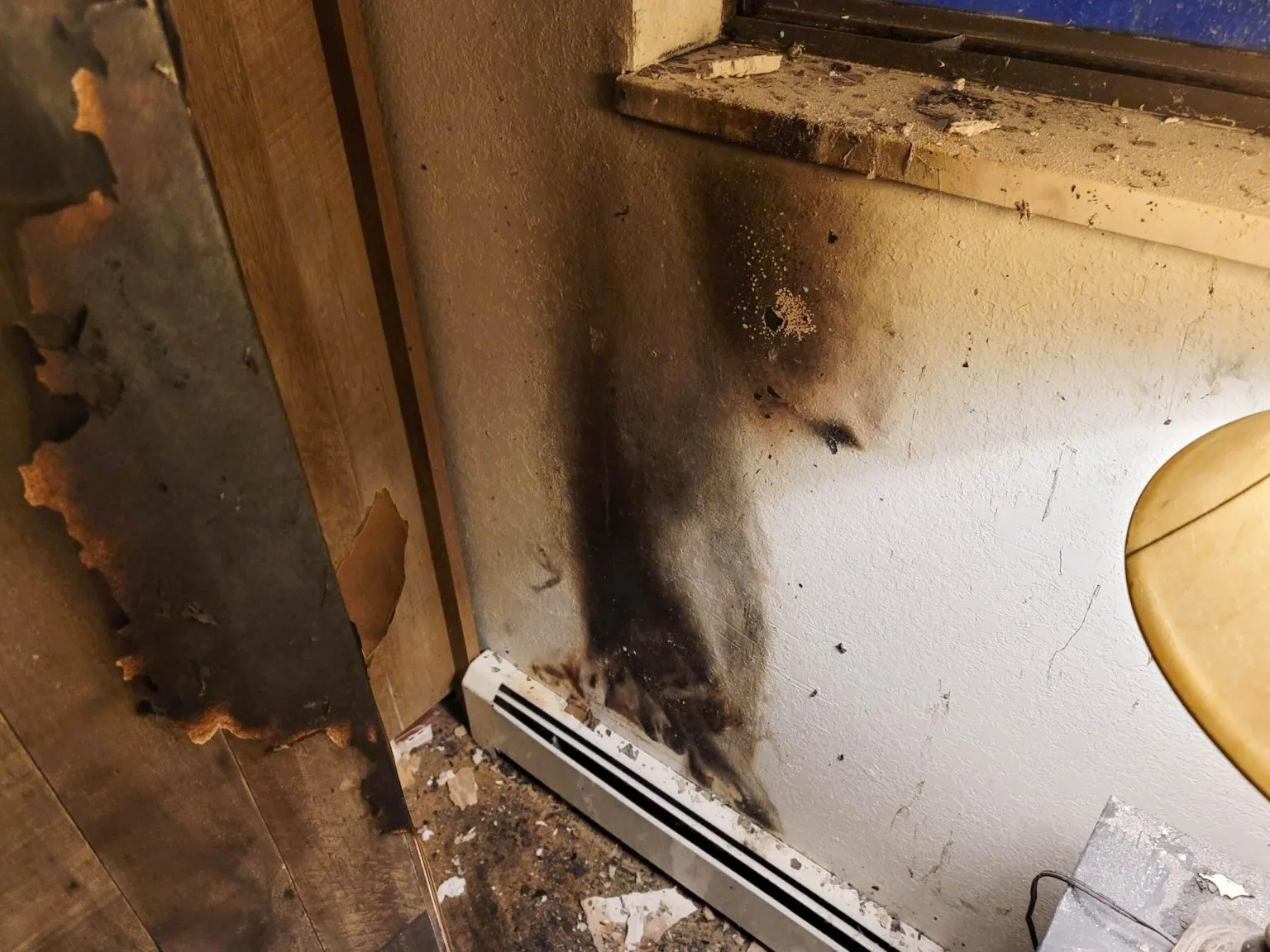Understanding Smoke Patterns After a Fire
1. Introduction
Smoke patterns are a key component of post-fire analysis. They provide insight into the fire’s origin, development, and interaction with the surrounding environment. This report outlines the methods for identifying and interpreting smoke patterns to support accurate fire investigations.
2. Purpose of Analysing Smoke Patterns
Smoke deposits help determine: – The origin point of the fire. – The direction and speed of fire spread. – The influence of ventilation, such as open windows or HVAC systems. – The presence of obstructions or removed items (through soot shadows). – Clues about accelerants or abnormal fire behaviour.
3. Factors Influencing Smoke Behaviour
3.1. Heat and Convection Currents
Hot gases and smoke rise rapidly, forming V-patterns where flames impinge on vertical surfaces. The highest concentration of smoke residue typically aligns with the hottest path of travel.
3.2. Ventilation
Openings (windows, doors, vents) affect how smoke flows. Smoke often moves toward low-pressure areas or exhaust points, creating directional streaking.
3.3. Air Flow and Obstructions
Furniture and structural features redirect smoke. This creates ‘ghosting’ or shadowing — clean areas where objects block soot deposition. Investigators can use these patterns to deduce object locations and fire intensity zones.
3.4. Surface Material and Temperature
Soot adheres differently to various materials: – Smooth surfaces: Thin, even layers of soot. – Rough or porous surfaces: Heavier deposition. Soot may be burned off in high-temperature areas, creating clean burn areas.
4. Types of Smoke Patterns
V-Patterns
Smoke and burn marks that rise and widen into a V-shape
Often indicate the fire’s point of origin
Clean Burn Areas
Zones where intense heat burned off soot
High-temperature exposure, possible flashover
Ghosting/Shadowing
Soot outlines around objects
Shows object placement and airflow direction
Soot Trails
Linear smoke deposits along cracks or gaps
Indicates smoke movement or hidden fire spread
Layered Soot
Distinct bands of soot on vertical surfaces
Suggests smouldering followed by rapid growth
5. Smoke Colour and Composition
Black, oily smoke: Plastic and synthetic material combustion. – Light grey or white smoke: Wood, paper, or other organic materials. – Yellow or brown staining: Chemical fires or heavy smoke from oil-based products. Colour changes can also indicate transitions in fuel load or fire phases.
6. Investigation Tips
Cross-check smoke patterns with burn damage and heat sources. – Look for inconsistencies: reversed V-patterns, uneven soot deposition, or shadowed areas with no corresponding object. – Use smoke paths to trace possible ignition points and fire acceleration zones. – Examine ceilings, walls, and ventilation systems for hidden soot pathways.
7. Limitations and Considerations
Suppression efforts, time delays, or post-fire activity can alter smoke patterns. – Secondary fires or re-ignition can create overlapping patterns. – Accelerants may alter typical soot distribution and colour. Pattern analysis should always be paired with physical evidence and witness accounts to achieve a comprehensive understanding.
8. Conclusion
Smoke pattern analysis is a powerful tool when used in context. Recognising key indicators—such as V-patterns, ghosting, and clean burns—can significantly enhance the accuracy of fire origin and cause determinations. This technique, when combined with other investigative methods, forms the backbone of effective fire scene analysis.
